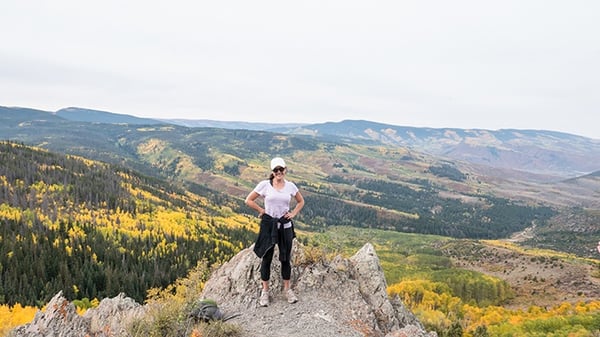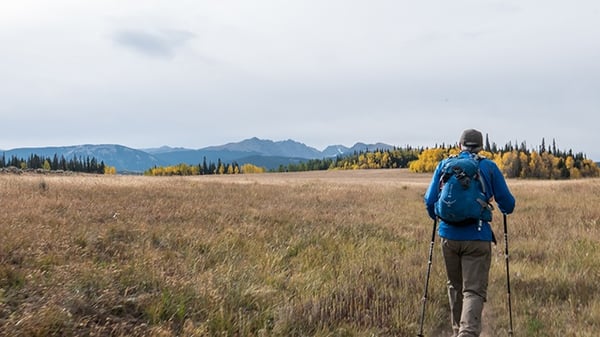Trail Name: Big Park via Stagg Gulch/ Squaw Creek trails
Walking Mountains' weekly hikes are hand picked by our hiking guides and environmental educators to get you out on the most beautiful trails at the most scenic time of year. Whether it's wildflower blooms or beating the crowds, Walking Mountains' team of nature nerds is out there to show you the best experience on our vast public lands and wild environments. Check back next week for another timely and beautiful, Hike of the Week.

Mileage:
10 mile loop using Stagg Gulch and Squaw Creek trails or 7 miles and out back using Stagg Gulch.
Subjective rating:
Moderate. Less than 2,000ft of elevation change throughout the trail

What to Expect:
The Squaw Creek Trail and Stagg Gulch Trail share a trailhead at the end of Squaw Creek road underneath Cordillera. The trails begin with a short and steep section to quickly get out of the valley.
Roughly 1 mile into the trail the trail splits, with Squaw Creek Trail peeling off to the left, and the Stagg Gulch trail on the right. If hikers are making a loop out of the two trails I always recommend following the Squaw Creek trail since it is mellower and follows the meandering Squaw Creek. After roughly 4 miles, the trail opens up at a hunting camp referred to as Elk Park. Follow the road (using the map you brought with you!) out the back of the campsite to begin the return trek via the Big Park Meadows following Forest Road 421.
For the shortest trek to the Big Park meadows, head directly up the Stagg Gulch trail. After a couple steeper inclines, one with a gorgeous view of the I70 corridor, the trail passes by the old Stagg Spring just before popping out into the meadows. My favorite trick as you hike out of the woods on the final ascent, is to keep your eyes fixed on the horizon and let the mountains seemingly appear out of thin air!
Stewardship Message
Stewardship Message:
The big park meadows and most of the Squaw Creek drainage are very popular hunting grounds during the fall. Licensed hunters are just one of the many tools used by Colorado Parks and Wilderness to control wildlife and promote a natural balance in our forest ecosystems. It’s recommended to wear plenty of bright orange when hiking during the hunting season and to check in with your local Forest Service, BLM, or Colorado Parks and Wildlife office to learn about where and when hunting is allowed.
Walking Mountains Science Center leads guided hikes year round for people of all ages and abilities.
To see a schedule, click here or stop by one of their Eagle Valley Locations:
In Avon at the Buck Creek Campus behind the hospital
On Vail Mountain at the Nature Discovery Center
At the Vail Nature Center near the Betty Ford Alpine Gardens
In Vail Village at the Vail Nature Concierge







